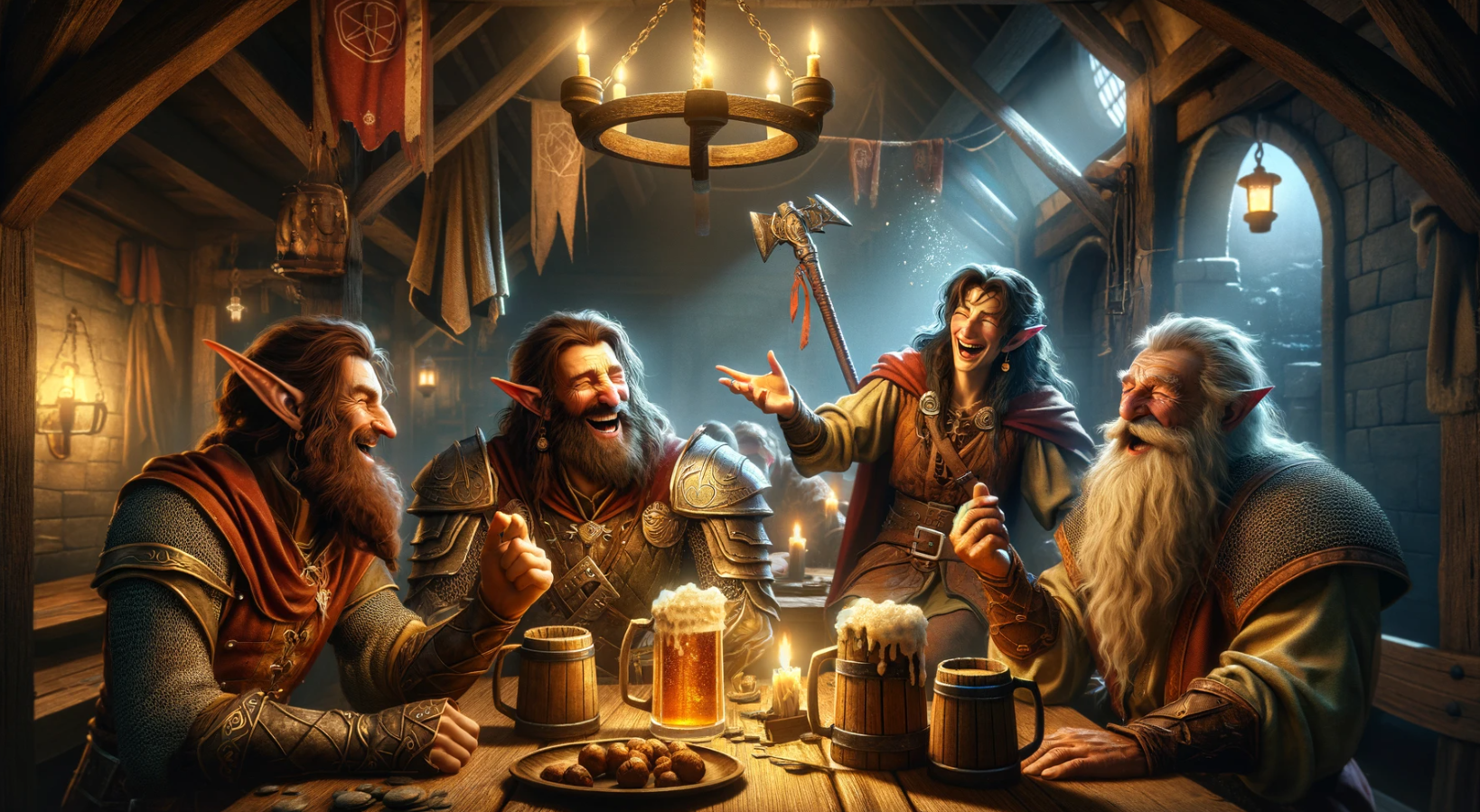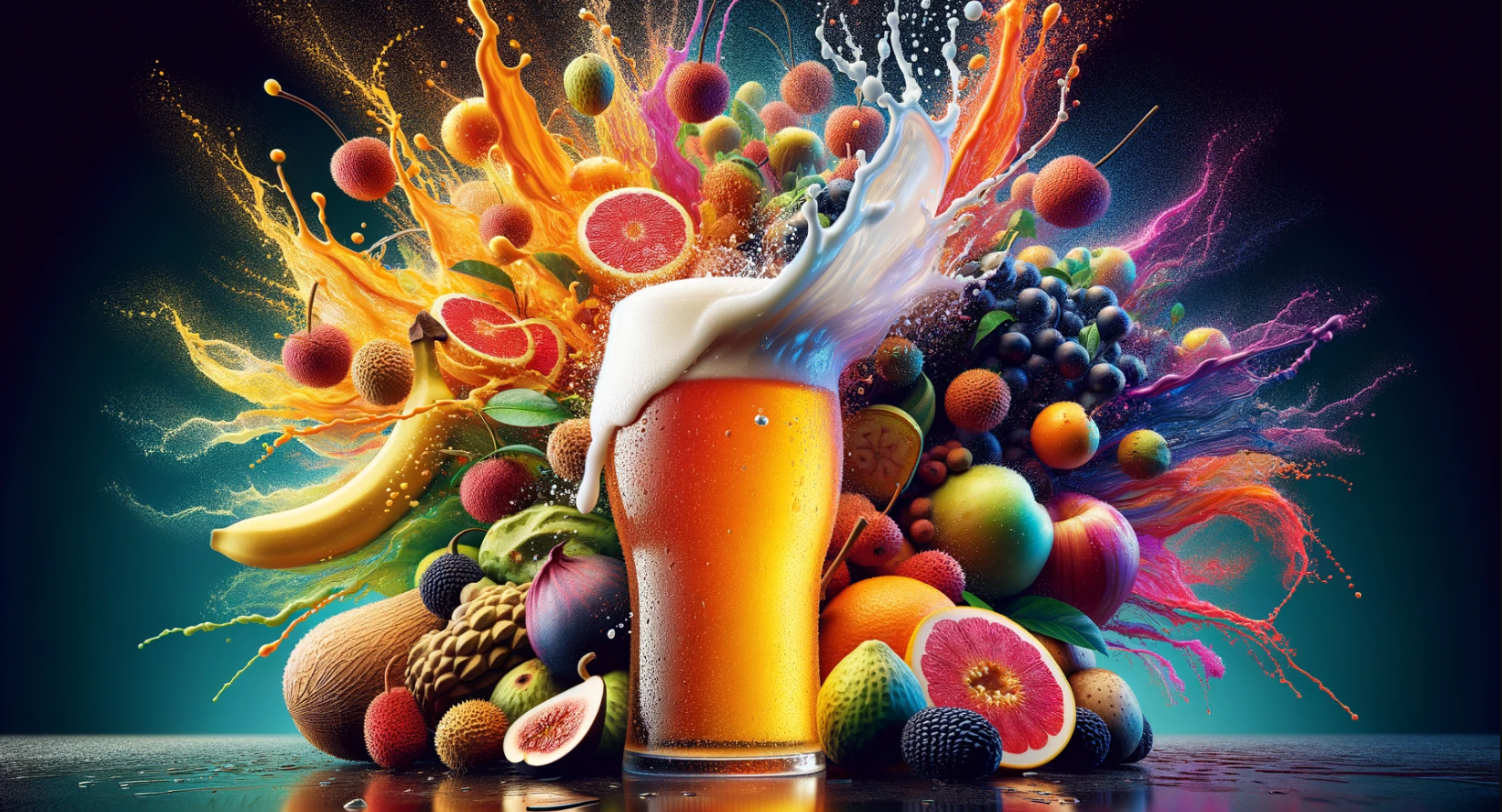I have been obsessing over alcohol in Middle Earth for decades now, and finally, I uncovered the whole truth behind the Lord of the Rings! If, like me, you’re a die-hard fan of The Lord of the Rings, and you’ve also seen the long version, there’s a famous scene in which Boromir orders the wort to be brought in to celebrate the capture of Osgiliath. It’s a magnificent, epic moment, showing the lost splendor of the kingdom of Gondor, and illuminating the heroism and leadership of a character whose end was tragic.
The whole scene was ruined for me by an unthinkable inconsistency: the beer barrels were made of metal. How can the blacksmiths of Middle-earth make metal barrels when they can’t build metal gates in Minas Tirith to protect themselves from Sauron?
Since then, I’ve been haunted by the question of alcohol in The Lord of the Rings. Here, then, is a romantic approximation of the alcoholic diets of the various races of Middle-earth, with, of course, occasional references to the great heroes of Númenor. Warning: the following text may shock you.
The Hobbits: this is not a small matter
If Merry and Pippin’s Celtic-Scottish dances are anything to go by, the hobbits never end an evening without their hairy legs waltzing around the table, laughing their heads off. These fairy-tale creatures certainly know a thing or two about high alcohol levels. So yes, Hobbits like to partake.
If hobbits do drink quite a bit, their beer is probably been around 4% ABV. Why? Because the Shire is low-tech. No fancy fermentation technique here. Because everything the Shire looks staunchly anti-capitalist, their beer probably resembled homemade English ale between the 11th and 15th centuries, before hops were widely adopted.
HOWEVER, it’s not just beer that cheers up our short-legged friends. The Shire is also home to the famous Longbottom leaves. Judging by the constantly amused faces of our two fellow hobbits, you’d think they had access to some highly psychoactive herbs. In the humble opinion of your whimsical correspondent: Merry and Pippin’s tobacco leaves are literally marijuana.
Of course! How else can we explain the fact that these two merry men agree to embark on a suicidal adventure in the land of Mordor with the perfectly innocent demeanor of two kids frolicking in a wondrous forest? Another digression: I increasingly believe that Merry and Pippin are totally hallucinating their trip to the land of the big talking trees.
Even more serious question : did Gandalf also get high on Longbottom leaves? The wizard was also a great fan of Hobbit tobacco. For the record, certain types of tobacco in the real world also have significant psychoactive effects. Is it possible that Gandalf’s famous ruminations are merely a reflection of Longbottom’s vapes? Do your research, as the other guy would say.

Elves and the elixir of long life
The elf-industrial complex doesn’t want you to know this, but the only reason the Elves live 3000 years is because they have long since mastered the elixirs of long life. You know, in Norse mythology, Odin is said to drink only inspirational mead, a beverage strong enough to drive one completely mad. It’s time for the truth to come out: before the first dawn, the Elves invented a magical mead that allowed them to live happily, wisely and slightly stoned at the same time.
You may ask: but then, why is this alcohol never featured in books or films? Well, because it’s a secret! A secret even more important than the One Ring! The Elves don’t want you to know.
Not that I’m any kind of conspiracy theorist – of course not! – but I do wonder if control of this mead isn’t at the root of the war against Morgoth (the big boss of the evil Sauron) and one of the world’s first entities. All the evil in Middle-earth began when Morgoth broke away from Iluvatar’s original song. After this conflict between celestial musicians, Morgoth is furious and wants to destroy everything. Well, guess why he sang out of tune? Because he was drunk, poor fellow. Morgoth was the first Ainur to get drunk in the world. He merely wanted to share his drinks with the rest of the Creation…

Drunk Dwarves Under the Mountain
As usual, we don’t really know what the dwarves drink under the mountain. We don’t really know what they eat – apart from Gimli’s predilection for salted bacon in the films. However, if there’s one thing you can count on about Dwarves in other fantasy worlds, it’s that they don’t mess around with booze.
Their beer, brewed deep in the mountains, is a symbol of their art and culture. A beer as black as night, as thick as mithril, with notes of stone and minerality, reflecting their love for the bowels of the earth. This drink is so strong it could sway an Ent, but it’s also a source of warmth and camaraderie, shared around a fire in the halls beneath Lonely Mountain.
Dwarves are the archetypal workers of Middle-earth. While the bosses (the elf-industrial complex, of course) play harps and eat grapes, the Dwarves toil from 6:00 a.m. to 8:00 p.m. in sweat and tears to find riches they must then trade. And with whom? The Elves. Yes, because Men are too poor. It’s the Elves who have accumulated the money, they and their powers…
So when it comes to workers, it’s stout. A stout is a tough beer, black as earth, sedimentary, agrarian, solid and high in alcohol. As the mines of Moria are huge stone warehouses, these beers are aged in casks for months, even years. (Maybe they’re the ones who make those famous METAL barrels you see in the movies!) This explains why the Elves are so haughty towards the Dwarves. They watch them prepare their piquette from the top of their Lothlórien towers, guzzling elixir of long life.
But do you know what? Dwarves do virtuous work and they deserve their good beer at the end of the day, their good beer at dinner, and their beer at lunch. And their union-break beer. They too have a solid constitution and, anyway, it’s not as if there were ever any accidents on the job in the Mines of Moria or anywhere else. It’s not like you can accidentally wake up a BALROG!
Beer and Men
In Middle-earth, being a man means being imposing, having a big beard and, in Peter Jackson’s version, displaying systemic racism towards Hobbits. Nothing like that in Tolkien’s books, where everyone practically talks like a philosopher. But that doesn’t help us identify the men’s style of beer.
Even so, men (and women) don’t have it easy in Tolkien’s universe. Caught between invisible Hobbits, hidden Dwarves and Elves who couldn’t care less, Men haven’t inherited much, apart from Sauron’s eternal fury and the empire of his legions of orcs…but they have fields and they’re thirsty. Thus, they have beer.
A distinction must be made between Rohan and Gondor. Rohan is further north, poorer and more rural. The land is less generous than in Gondor. But Gondor’s power is also older, stemming from the vanished island of Númenor. And who was it that loved the people of Númenor so much for supporting them against Morgoth? ELVES. It’s obvious, then, that the Elves helped them optimize two or three basic civilization concepts. For this reason, there can be no doubt that the Elves showed the Númenóreans the hidden art of distillation.
In the unpublished texts of Christopher Tolkien – another member of the elf-industrial elite who protects the secret of the elixir of long life – we read of the little water of Gondor, a drink so strong it could topple an Oliphant!
A distillation so intense that it’s reserved for the most heroic celebrations, even the initiation rites of the White City’s guardians. This drink, my friends, is shrouded in a veil of mystery so thick that not even the most erudite of Elves can guess its composition – and God knows they’ve tried!
Orcs, inventors of the Moonshine
As you can see, we haven’t even mentioned the Orcs. Yes, the Orcs who lie just outside the gates of Gondor, living in the coldest, most inhospitable region of Middle-earth.
What do Orcs drink? The answer is as dark and complex as the Orcs themselves: Grogbolg. A beverage distilled from literally EVERYTHING that can be harvested in these cursed lands – black mushrooms, bitter roots, and if some rumors are to be believed, the blood of vanquished enemies. (You’ll have to ask Frodo about his two little scars on his throat. They didn’t come from a battle with Hobbits!)
Grogbolg is a thick, syrupy, black drink with an alcohol content that would make a mountain troll vomit. Its production process is a well-kept secret, handed down from generation to generation of Orcs, and is said to involve fermentation in wells dug deep into the earth of Mordor, where volcanic heat accelerates the process. (Historians agree that this is yet another corruption of the original Elven recipe. At the famous Mead Congress in 2998, Elrond formally refuted this theory, saying that the first Elves had never been “seriously interested in distilled spirits”).
But wait, there’s more. You may think that Orcs are content to sip their Grogbolg in the solitude of their dark dwellings? Think again. Orcs have their own drinking rituals, wild gatherings where Grogbolg flows freely, the praises of Sauron are sung (if you can call it that) and the battles to come are celebrated. These rituals are so intense that even the most valiant elven spies dare not approach them.
For a time, Grogbolg became very popular in the East. The Ring Wars had ravaged the country and depleted stocks. Grogbolg had become the most accessible alcohol in Eriador – although it never reached the Shire. The Orcs, fearing the jealousy of the Elves, of course had to travel in tunnels deep into the bowels of the Earth. For over a thousand years, Orcs were smugglers of this survival elixir, navigating the underground. And because of this, the ELVES… fought them mercilessly.

What have we learned?
If you’ve come here, it’s because you’re looking for the truth too! The Elvish military complex is real. They’d have you believe that the War of the Ring campaign was designed to wipe out the illegal smuggling trade for good. They wanted at all costs to avoid an alliance between the Dwarves and the Orcs, who might have supplanted their monopoly!
All joking aside, Tolkien is a brilliant author. Hail to Tolkien and his world, Elves and Orcs included!

Pierre-Olivier Bussières has been writing about beer markets since 2021. He is the author of the Le Temps d’une Bière podcast, producer of Hoppy History and editor-in-chief of Le Temps d’une Bière media. He holds a graduate degree in political science from Carleton University.
Pour de la vraie histoire, voyez les articles ci-dessous
7 Anecdotes fascinantes sur la bière dans l’histoire
La bière est un vieux compagnon des humains. Au-delà de la bière elle-même, le brassage a grandement contribué à l’essor des civilisations, de son rôle clé dans l’économie en passant par la science. Voici sept anecdotes incroyables sur la bière
La bière en Mésopotamie
Un aperçu fascinant des découvertes récentes sur la bière en Mésopotamie, détaillant les techniques de brassage et leur importance dans la société ancienne. Apprenez plus sur la diversité des bières et leur rôle dans la diète quotidienne des Mésopotamiens.
Histoire du P’tit Train du Nord
Derrière cette fameuse piste cyclable du Québec, il y a plus d’un siècle d’histoire du petit train du Nord, cette grande artère qui lia les Laurentides à Montréal.












Leave a Reply